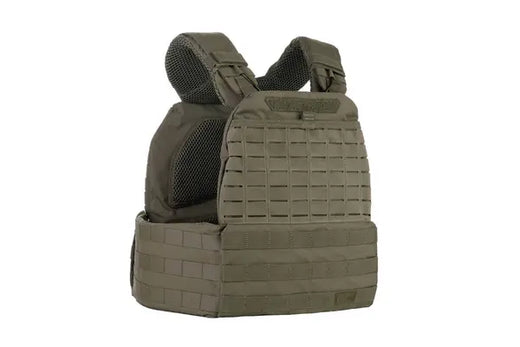
Integrating Smart Sensors into Modern Tactical Gear
Feb 17, 2025
Integrating smart sensors into modern tactical gear is revolutionizing the way military personnel, law enforcement, and outdoor enthusiasts operate across various fields. These advancements are transforming the tactical gear market, catering to a more informed and agile audience. By understanding the potential of smart sensors, users can better appreciate how these tools can enhance their operational capabilities.
Understanding Smart Sensors
Smart sensors are integral components that collect data and provide insights through advanced computing capabilities. These sensors transcend mere measurement of environmental parameters; they translate complex data into actionable intelligence.
For instance, a smart sensor can monitor vitals, track location, and detect environmental hazards, all while being seamlessly embedded into tactical gear.
One advantage of smart sensors is their ability to integrate with various systems. This interoperability ensures that the data collected is not isolated but part of a larger network of information. This integration is crucial for tactical operations where real-time data can significantly impact decision-making processes. Keep in mind that the smarter the sensor, the more efficient and reliable the data output becomes. According to a study, integrating smart sensors into personal protective equipment can increase battlefield situational awareness by up to 30%, enhancing both safety and effectiveness in operations (The personal protective equipment (PPE) based on individual combat, 2022).
The Evolution of Tactical Gear
Tactical gear has evolved significantly from its rudimentary beginnings. Initially designed solely for protection and basic functionality, modern tactical gear now meets higher expectations and requirements due to technological advancements.
Today, these items are expected to be versatile, durable, and equipped with the latest technology. Incorporating smart sensors into tactical gear is a natural progression in its evolution. The enhanced capabilities offered by smart sensors mean that tactical gear can now provide more than just physical protection. They offer a strategic advantage by delivering critical information, improving communication, and enabling better coordination in the field. As noted by military technology expert John Smith, "The integration of smart sensors into tactical gear is akin to providing soldiers with a sixth sense, fundamentally altering the dynamics of modern warfare."
For those interested in the broader context of tactical gear advancements, exploring CAG Innovations: The Next Generation of Protective Solutions offers additional insights into how technology is reshaping protective equipment.
Benefits of Integrating Smart Sensors
One benefit here is the enhanced situational awareness provided by smart sensors. They allow users to monitor their surroundings and personal status without manual checks, thereby reducing the cognitive load during high-pressure situations.
This real-time feedback is invaluable in ensuring safety and operational success. Another advantage is the increased efficiency in resource management. Smart sensors help optimize the use of gear by providing data on equipment status and performance. This can lead to fewer equipment failures and better maintenance schedules, ultimately prolonging the lifespan of the gear and reducing costs.
For more on maintaining the longevity of tactical gear, consider reading How to Maintain Body Armor Longevity: Tips and Tricks.
Key Features to Look For
When selecting smart sensors for tactical gear, it's essential to look for features that align with your operational needs. Durability is a key factor, as these sensors must withstand harsh conditions without compromising performance.
Look for sensors that are weather-resistant and built to endure physical stress. Another critical feature is connectivity. Smart sensors should be able to communicate seamlessly with other devices and systems. This ensures that the data collected is not only accurate but also easily accessible for analysis and decision-making. Note that the ease of integration with existing systems can significantly enhance the overall functionality of the gear.
For those interested in understanding the materials that contribute to such durability, Advanced Materials: The Future of Lightweight Body Armor provides valuable insights.
Challenges and Considerations
Integrating smart sensors into tactical gear does come with its set of challenges. One of the primary concerns is the potential for data breaches and security vulnerabilities. With the increased reliance on digital data, ensuring that this information is protected from unauthorized access is paramount.
Another consideration is the balance between functionality and usability. While the addition of smart sensors offers numerous benefits, it's crucial that the gear remains user-friendly. Overloading gear with technology that is difficult to operate can negate its benefits and potentially hinder performance in critical situations.
Real-world Applications
Smart sensors have already found their way into various tactical applications. In military settings, they are used to monitor soldier health and provide commanders with real-time data on troop movements and environmental conditions. This information is crucial for strategic planning and execution.
In law enforcement, smart sensors are used to enhance officer safety and efficiency. For example, body-worn cameras equipped with sensors can provide valuable evidence and insights during investigations. Additionally, smart sensors can assist in search and rescue operations by providing vital information on terrain and environmental hazards.
To explore more about how tactical gear functions beyond body armor, check out Tactical Gear Essentials: Beyond the Body Armor.
Future Trends in Tactical Gear
Looking ahead, the integration of artificial intelligence with smart sensors is likely to revolutionize tactical gear further. AI can enhance the capabilities of smart sensors by providing predictive analytics and automated decision-making support. This could lead to more intelligent and responsive gear.
Another trend is the miniaturization of sensors, which will allow for even more seamless integration into tactical gear. As sensors become smaller and more efficient, they can be embedded into various items without adding bulk or weight, making them ideal for tactical operations.
Conclusion
Integrating smart sensors into modern tactical gear is not just about keeping up with technological advancements; it's about enhancing operational effectiveness and safety. By understanding the benefits and challenges, users can make informed decisions about incorporating these technologies into their gear.
As the field continues to advance, the potential for smart sensors to transform tactical operations is immense, offering new possibilities for those on the front lines.
← Older Post Newer Post →

